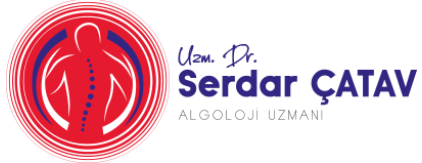Trigeminal neuralgia (TN) is a condition characterized by sudden, recurrent, short-term, unilateral electric shock-like attacks of pain triggered by harmless stimuli in the distribution of one or more parts of the fifth cranial nerve (trigeminal). The trigeminal nerve gives both sensory and motor branches to the sensory and masticatory muscles of the face. It has three main parts:
Ophthalmic Nerve (V1): The first branch controls sensation in the eye, upper eyelid, and forehead.
Maxillary Nerve (V2): The second branch controls sensation in the lower eyelid, cheek, nostril, upper lip, and upper gum.
Mandibular Nerve (V3): The third branch controls the sensation of sensation in the jaw, lower lip, lower gingiva and the operation of the chewing muscles.
The vast majority of trigeminal neuralgia cases affect the maxillary or mandibular division (V2 or V3) alone or in combination. About 5% of patients experience symptoms only in the ophthalmic section (V1).
Pain typically involves the lower face and jaw. However, it sometimes affects the area around the nose and above the eyes. This intense stabbing, electric shock-like pain is caused by irritation of the trigeminal nerve. It is usually limited to one side of the face.
Pain can be triggered by light tactile stimuli, including brushing your teeth, washing your face, shaving, drinking hot or cold beverages, chewing, talking, a cool breeze, or a light touch to the face. Some attacks can occur spontaneously without a clear trigger.
Pain attacks can occur repeatedly throughout the day. Attacks rarely occur during sleep. The frequency and severity of TN can vary significantly from one person to another. One patient may experience up to a hundred pain attacks in a day, while another patient may have only an occasional attack. The attack improves periodically at first and then returns. Over time, the pain tends to get worse with fewer pain-free periods. It may start out mild and short, but if left untreated, trigeminal neuralgia can gradually worsen.
Trigeminal neuralgia treatment includes drugs, injections and surgical applications. Percutaneous gasser ganglion blockade can be applied in patients who cannot benefit from drug therapy. This is a day-to-day application under fluoroscopy-guided operating room conditions.
The procedure requires patient cooperation; therefore, it is performed under local anesthesia and light sedation. After the patient is placed supine and the necessary antisepsis is applied for the procedure area, a 2.5 cm lateral needle is inserted into the corner of the mouth under the guidance of C-arm fluoroscopy. Advancement of the needle from the medial into the foramen ovale is confirmed in the oblique view. Fluoroscopy guidance facilitates insertion of the radiofrequency needle through the foramen ovale. Needle placement is confirmed by lateral fluoroscopic view before neurolysis.
As the needle progresses step by step towards Gasser’s ganglion, V3, then V2 and finally V1 branch is encountered. The stylet is then replaced with the electrode to confirm that the nerve root stimulation coincides with the site of paresthesia felt by the patient. The patient is given sedation-style light anesthesia. Then, following the correct needle placement, thermolesion is started in 45-90 second cycles at temperatures between 60 and 90 ° C. If Pulse radiofrequency therapy is to be applied, 42°C is applied for 120 seconds. The patient is awakened between cycles for manual sensory testing until the pain is completely resolved.
Complications associated with this procedure include an increased risk of keratitis, muscle weakness, hyperesthesia, and, very rarely, decreased corneal sensation with anesthesia doloraza. Complications such as bleeding and infection may occur.
As a result, pain relief immediately following the procedure is very high, with 97.6-99% of patients reporting complete recovery. The recurrence rate after 1 year is 40%. The patient is discharged on the same day.




